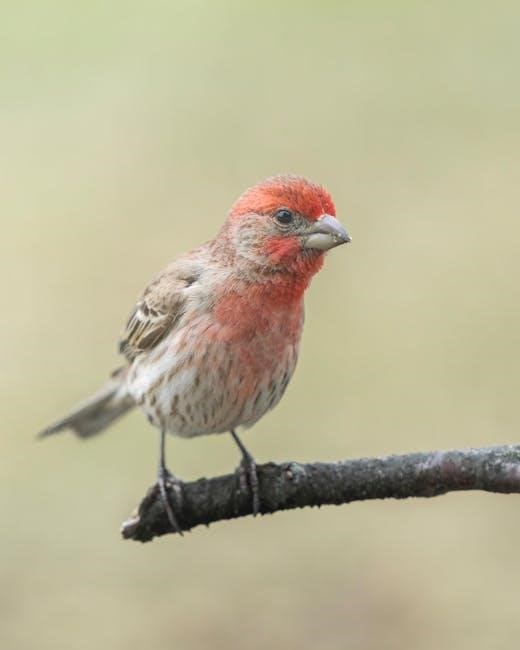Understanding ant identification is crucial for managing infestations and appreciating their ecological role. This guide helps recognize common Arkansas ant species, focusing on their unique traits and behaviors.
1.1 Importance of Identification
Identifying ants accurately is essential for understanding their role in ecosystems and addressing potential threats. Different species, like carpenter ants or fire ants, pose unique risks, from damaging structures to causing painful stings. Misidentification can lead to ineffective pest control measures, worsening infestations. Proper identification enables targeted solutions, protecting both the environment and human health. In Arkansas, where diverse ant species thrive, recognition is key to managing infestations and preserving ecological balance. By understanding their behaviors and habitats, individuals can take proactive steps to prevent invasions and mitigate risks associated with harmful species. Accurate identification is the first step in effective ant management and coexistence.
1.2 Unique Characteristics of Arkansas Ants
Ants in Arkansas exhibit diverse and distinct traits, making identification crucial. Species like Carpenter Ants and Red Imported Fire Ants display unique behaviors and physical features. Carpenter Ants are large, with shimmering black bodies, often infesting wood. Fire Ants, recognized by their reddish hue and painful stings, build prominent mounds. These characteristics reflect adaptations to Arkansas’s climate and habitats, allowing them to thrive in various environments. Understanding these traits aids in recognizing their ecological roles, such as soil turnover and seed dispersal. This knowledge is vital for effective pest management and appreciating their contributions to the ecosystem, ensuring a balanced approach to coexisting with these insects.

Physical Characteristics for Identification
Ants in Arkansas vary in size, color, and body structure, with distinct features like antennae shape, mandible size, and body segmentation, aiding precise species identification.
2.1 Body Structure and Anatomy
Ants have a distinct body structure consisting of three main sections: head, thorax, and abdomen. The head features large mandibles for food processing and sensory antennae. The thorax, segmented into three parts, houses muscles for movement. The abdomen contains digestive organs and, in some species, stingers. Arkansas ants, like carpenter ants, often have a robust thorax for wood excavation. Fire ants, conversely, display a narrower waist and a stinger at the abdomen’s tip. These anatomical differences are crucial for accurate identification and understanding their ecological roles. Observing body proportions and unique features helps in distinguishing between species.
2.2 Color Variations and Patterns
Ants in Arkansas exhibit a range of colors, from solid tones to intricate patterns, aiding in identification. Carpenter ants are often black or dark brown, while red imported fire ants display reddish-brown bodies with darker abdomens. Odorous house ants typically appear brown or black, sometimes with a smoother texture. Pavement ants are usually brown to black, with parallel grooves on their head and thorax. These color variations, combined with body shape and size, help distinguish species. For instance, the reddish hue of fire ants is a key identifier, while carpenter ants’ uniform black color sets them apart. Understanding these visual cues is essential for accurate identification and effective pest management strategies.
2.3 Size and Shape Differences
Size and shape are critical factors in identifying Arkansas ants. Carpenter ants are among the largest, measuring up to 1/2 inch, with elongated, oval bodies. Red imported fire ants are smaller, typically 1/4 inch, with a distinctive node-like structure between their abdomen and thorax. Odorous house ants are even smaller, around 1/8 inch, with a compact, rounded shape. Pavement ants are medium-sized, about 1/3 inch, and often have parallel lines etched into their head and thorax. These physical differences help distinguish species, as larger ants like carpenter ants are often mistaken for smaller ones. Recognizing size variations is key to accurate identification and understanding their ecological roles or pest potential.

Common Ant Species in Arkansas
Arkansas is home to several prevalent ant species, including carpenter ants, red imported fire ants, odorous house ants, and pavement ants, each with unique behaviors and impacts.
3.1 Carpenter Ants
Carpenter ants are among the most common and destructive ant species in Arkansas. They are large, typically ranging from ¼ to ½ inch in length, with a shiny black body and a rounded abdomen. These ants are known for their ability to chew wood to create nesting sites, though they do not eat the wood itself. Carpenter ants often infest moist or decaying wood, making them a significant threat to structural integrity. They are most active at night and are attracted to sweet substances like sugar or honey. Infestations can be identified by small piles of sawdust or frass near cracks or crevices. Early detection is crucial to prevent extensive damage to homes and buildings.
3.2 Red Imported Fire Ants
Red Imported Fire Ants (RIFA) are highly invasive and among the most troublesome ants in Arkansas. Known for their reddish-brown color and distinctive ¼-inch size, these ants deliver painful stings that can cause swelling and blisters. They construct large, mound-shaped nests in warm, sunny areas, often damaging lawns, agricultural fields, and infrastructure. RIFA are highly adaptable and can disrupt ecosystems by outcompeting native species. Their stings pose health risks, especially to individuals with allergies. Controlling their populations is challenging, as they can form massive colonies with multiple queens. Preventative measures include eliminating standing water, sealing entry points, and using targeted baits. Their presence requires immediate attention to mitigate both environmental and human impacts.
3.3 Odorous House Ants
Odorous House Ants (OHA) are small, dark brown to black ants, typically 1/8 inch long, known for emitting a distinct rotten coconut-like odor when crushed. They are common in Arkansas and often invade homes in search of sweet or sticky substances. These ants are highly attracted to moisture and can be found near sinks, bathrooms, or areas with water damage. Colonies are usually small but can form multiple nests both indoors and outdoors. While they do not bite or sting, they can contaminate food and be a persistent nuisance. Control measures include eliminating standing water, sealing entry points, and using natural deterrents like cinnamon or vinegar. Regular cleaning and proper food storage can also help prevent infestations.
3.4 Pavement Ants
Pavement Ants (Tetramorium caespitum) are small, dark-colored ants, typically 1/8 inch long, with parallel ridges on their head and thorax. They are common in Arkansas, often nesting in soil beneath pavement, sidewalks, and driveways. These ants create small mounds or cracks in the pavement, which can be unsightly and indicate an infestation. Pavement Ants are foragers, feeding on sweet substances, oils, and proteins. They are most active at night and can enter homes through cracks in foundations or walls. While they do not sting, they can contaminate food and cause structural damage over time. Controlling Pavement Ants involves sealing entry points, removing food sources, and treating nests directly with insecticides or natural deterrents like diatomaceous earth.

Behavioral Traits for Identification
Ants exhibit distinct behaviors like foraging patterns, nesting habits, and social interactions, which are crucial for accurate identification and understanding their ecological and pest-related impacts in Arkansas.
4.1 Foraging and Feeding Habits
Ants in Arkansas exhibit diverse foraging and feeding behaviors, crucial for identification. Some species, like odorous house ants, prefer sweet liquids, while carpenter ants target moist wood. Red imported fire ants are omnivores, scavenging for proteins and sugary substances. Pavement ants often forage in cracks and crevices, feeding on small insects and spilled food. Understanding these habits helps in recognizing species and managing infestations effectively. Seasonal variations also influence foraging patterns, with peak activity during warmer months. This knowledge aids in targeting control strategies, ensuring efficient pest management in both residential and natural settings across Arkansas.
4.2 Nesting and Colony Behavior
Ants in Arkansas exhibit diverse nesting and colony behaviors, essential for identification. Carpenter ants typically nest in decayed or moist wood, creating galleries for their colonies. Red imported fire ants build large, visible mounds in open areas, often near water sources. Odorous house ants prefer nesting in soil or under debris, while pavement ants infest cracks in sidewalks and buildings. Colony sizes vary, with some species forming large, interconnected networks. Understanding nesting patterns helps in locating infestations and implementing effective control measures. Seasonal changes influence colony activity, with peak nesting during spring and summer. This behavior is crucial for both ecological balance and pest management strategies in Arkansas.
4.3 Social Structure and Communication
Ants in Arkansas exhibit complex social structures and communication methods. Colonies are typically organized into castes, including workers, soldiers, and queens, each with distinct roles. Communication is primarily through chemical signals, or pheromones, which guide foraging, nesting, and alarm behaviors. Physical interactions, such as body movements and touch, also play a role in conveying information. For example, workers often tap or stroke each other to signal recognition or initiate food sharing. Pheromone trails are particularly important for foraging efficiency, allowing ants to mark paths to food sources. Understanding these communication strategies is key to identifying species and managing infestations effectively in Arkansas.
4.4 Seasonal Activity Patterns
Ants in Arkansas exhibit distinct seasonal activity patterns influenced by temperature and humidity. In spring, ants emerge from winter dormancy, initiating foraging and nest expansion. Summer sees peak activity, with ants foraging intensely and colonies reaching maximum size. During this time, winged reproductive ants often appear, preparing for mating flights. In autumn, activity slows as ants focus on storing food and preparing for colder months. Winter brings reduced surface activity, with ants retreating to underground nests for shelter. Understanding these seasonal behaviors aids in identifying species, as some, like carpenter ants, are more active in warmer months, while others, such as odorous house ants, may remain active year-round in heated environments.

Habitat and Nesting Sites
Ants in Arkansas inhabit diverse habitats, from urban areas to natural ecosystems, with species-specific nesting preferences. Carpenter ants favor moist wood, while fire ants thrive in open, sunny spaces.
5;1 Urban Environments and Ant Activity
Urban environments in Arkansas provide ideal conditions for various ant species, particularly those adapted to human-modified landscapes. Carpenter ants and fire ants are commonly found in cities, often infesting homes and yards. These ants are drawn to food residues, moisture, and sheltered spaces, making urban areas prime habitats. Fire ants thrive in open, sunny areas like sidewalks and gardens, while carpenter ants target wooden structures. Urban expansion has inadvertently created habitats for these pests, leading to increased infestations. Understanding their attraction to food and moisture is key to minimizing their presence. Regular property inspections and sealing entry points are essential preventive measures. Professional treatments may be necessary for severe infestations.
5.2 Natural Habitats and Nesting Preferences
In Arkansas, ants inhabit diverse natural habitats, from forests to grasslands. Fire ants prefer open, sunny areas with well-drained soil, often nesting near tree roots or under vegetation. Carpenter ants thrive in moist, wooded regions, constructing nests in decaying logs or tree cavities. Odorous house ants favor shaded areas with abundant food sources, like plant debris. Pavement ants, while common in urban settings, also reside in natural habitats, such as along trails or near rocky outcrops. Each species adapts to specific nesting sites, demonstrating ecological versatility. Understanding these preferences aids in identifying and managing ant populations effectively, ensuring both environmental balance and property protection. Natural habitats play a crucial role in sustaining ant diversity across Arkansas.
Impact on Environment and Humans
Ants play a dual role in Arkansas, aiding ecosystems but also damaging infrastructure and posing health risks through bites and stings.
6.1 Role in Ecosystems
Ants are vital to Arkansas ecosystems, contributing to nutrient cycling and soil turnover. They aid in seed dispersal and serve as a food source for various predators. Additionally, ants help control pest populations by preying on harmful insects, maintaining ecological balance. Their underground nesting activities improve soil aeration and water infiltration, benefiting plant growth. Despite their small size, ants play a significant role in sustaining biodiversity and ecosystem health in the state.
6.2 Negative Impacts on Infrastructure
Ants can cause significant damage to Arkansas’ infrastructure, particularly through their nesting habits. Carpenter ants are notorious for burrowing into wood, weakening structural components of buildings and homes. Fire ants, while less destructive to wood, can damage electrical systems by nesting in circuits and equipment, leading to costly repairs. Pavement ants often excavate soil beneath sidewalks and roads, creating cracks and instability. These activities result in financial losses for property owners and municipalities. Regular inspections and preventive measures are essential to mitigate these impacts and protect infrastructure from ant-related damage.
6.3 Health Risks from Bites and Stings
Ant bites and stings can pose health risks, especially for sensitive individuals. Red imported fire ants are particularly dangerous, delivering painful stings that cause redness, swelling, and blistering. In severe cases, their stings can trigger allergic reactions, including anaphylaxis, requiring immediate medical attention. Other species, like harvester ants, also sting, potentially causing discomfort. Some individuals may experience prolonged skin irritation or infections from scratching bite sites. It is crucial to exercise caution around ant colonies and seek medical advice if reactions occur. Preventive measures, such as avoiding nests and using protective clothing, can help minimize the risk of encounters with these harmful insects.

Control and Prevention Strategies
Effective ant control involves natural methods, chemical treatments, and sealing entry points. Regular monitoring and eliminating food sources help prevent infestations. Maintain a clean environment and seek professional assistance when needed.
7.1 Natural Pest Control Methods
Natural pest control methods are eco-friendly alternatives to manage ant infestations. Sealing entry points, removing food sources, and keeping a clean environment are essential first steps. Natural deterrents like cinnamon, vinegar, and peppermint oil can repel ants. Introducing natural predators, such as phorid flies, helps control fire ant populations. Maintaining yard cleanliness, eliminating standing water, and using diatomaceous earth are effective strategies. Planting ant-repellent herbs like mint or basil around the perimeter of your home can also deter ants. These methods promote a balanced ecosystem while minimizing chemical use, making them ideal for long-term ant management in Arkansas households and gardens.
7.2 Chemical Treatments and Best Practices
Chemical treatments are often necessary for severe ant infestations, especially for species like fire ants or carpenter ants. Insecticides, such as baits, sprays, or granules, can effectively target colonies. Slow-acting baits allow worker ants to return to the nest, eliminating the colony over time. Perimeter treatments and direct nest applications are common methods. Always follow product labels to ensure safety and environmental protection. Combining chemical treatments with natural methods, like sealing entry points, enhances effectiveness. Timing applications during peak activity seasons, such as spring or summer, can improve results. For severe cases, consult a pest control professional to avoid reinfestation and ensure proper application techniques. Chemical treatments should be used judiciously as part of an integrated pest management strategy.


